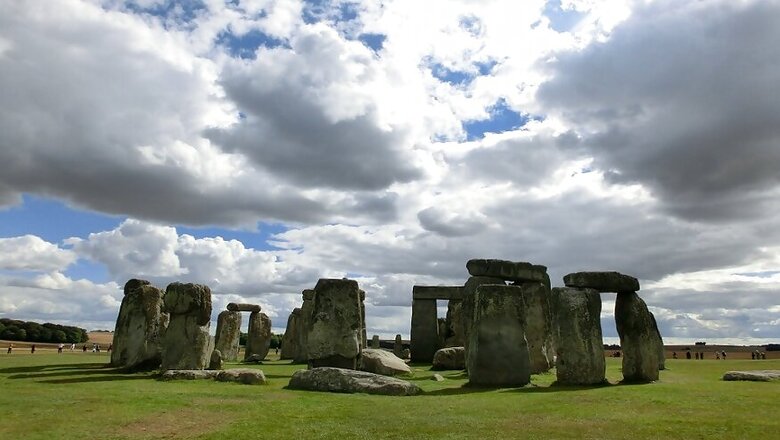
views
London: The Pythagoras' theorem was used to build ancient stone structures like the Stonehenge 2,000 years before the Greek philosopher was born, experts claim.
A new book, Megalith, has re-examined the ancient geometry of Neolithic monuments and concluded that they were constructed by people who understood lengthy lunar, solar and eclipse cycles and built huge stone calendars using complex geometry.
Megalithic expert Robin Heath proposed that a great Pythagorean triangle in the British landscape links Stonehenge, the site from which the Preseli bluestones were cut in Wales, and Lundy Island, an important prehistoric site.
Pythagoras' discovery that the sum of the areas of two squares on the sides of two triangle will add up to the area of a square on hypotenuse has been used been used for millennia to help builders attain perfect right-angles.
The book shows how within one of Stonehenge's earliest incarnations, dating from 2750 BC, there lies a rectangle of four Sarsen stones which when split in half diagonally forms a perfect Pythagorean 5:12:13 triangle.
The eight lines which radiate from the rectangle and triangles also perfectly align to important dates in the Neolithic calendar, such as the summer and winter solstices and spring and autumn equinoxes, 'The Telegraph' reported.
"People often think of our ancestors as rough cavemen but they were also sophisticated astronomers," contributor and editor John Matineau said.
"They were applying Pythagorean geometry over 2,000 years before Pythagoras was born," he said. Nearly two miles north-east of Stonehenge, stood Woodhenge, which was also constructed using a 12:35:37 triangle.
Consequently many stone circle' were not fully circular but have geometry derived from Pythagorean triangles often in whole numbers of Megalithic yards (2.72 feet) which were probably laid out using ropes and pegs.
The huge stones of Stonehenge were also once surrounded by 56 wooden posts or stones which could be used for predicting eclipses as well as showing the position of the Sun and the Moon and the lunar phases.
The bluestone horseshoe in the centre is thought to contain 19 stones to represent the number of years it takes for the Sun and Moon metonic cycle to go full circle and reset.
The authors believe that much of the knowledge was lost following the rise of Christianity in Britain.














Comments
0 comment